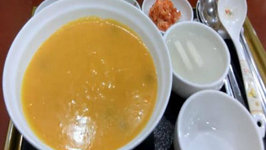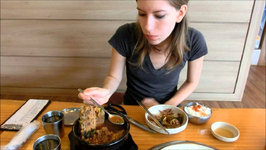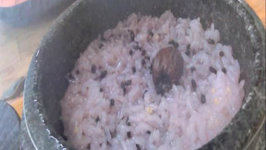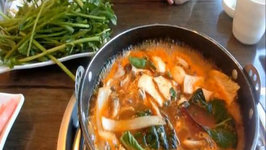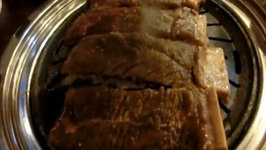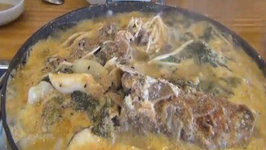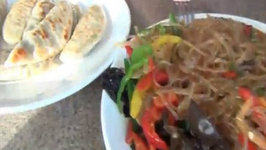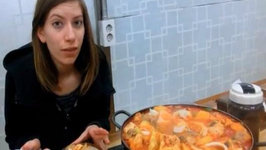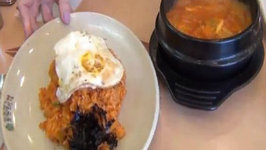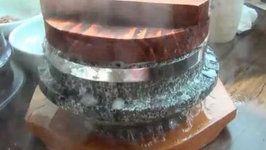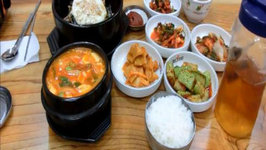Pumpkin Porridge (Hobakjuk) Life in Korea Series (Korean Rice Porridge)
In this video Sam and Audrey visit a traditional Korean porridge restaurant to fight off their colds. In this video we try Hobakjuk, which is a porridge made of pumpkin and glutinous rice. Juk is considered a staple "get well" dish, which is eaten when one is sick or recovering from bad health. All over Korea there is a chain of these 'well being' food restaurants called Bon Juk. It's such a popular chain that you'll find just as many of these as you would Starbucks or Lotteria. Like in many other parts of the world, the terms 'well being' and 'slow food' are being promoted to help combat fast food addiction. The dish itself takes time to prepare and is the kind of meal that is best to have with a friend given how large the portions tend to be in general. Like all Korean meals, this one too came along with a few little side dishes including Korea kimchi and soup. The porridge was sweeter than I anticipated, but it was a very tasty and heartwarming meal to enjoy on a cool autumn day. A few other types of Korean porridge I highly recommend include variations using walnuts and purple sweet yams. For those suffering from an upset stomach it's the perfect food to try considering it is so easy to digest. Apparently, Korean juk is also quite common in other Asian countries where it's known as another name it's also popular as a baby food. For those traveling or living in Korea, I highly recommend trying this dish -- whether you're sick or not -- given its lethal combination of being tasty and extremely healthy.In Korea, the dish goes by the name juk (IPA: tɕuk) derived from the Chinese language in which juk or jook means the same thing. More than 40 varieties of juk are mentioned in old documents.15 Depending on the ingredients and consistency, juk can be considered as a food for recuperation (much like chicken soup in modern American culture), a delicacy, or food during famine and war.15 The most general form of juk is simply called heen juk (white juk), which is made from plain white rice. Other varieties include different ingredients, such as milk, vegetables, seafood, nuts and other grains. Being largely unflavored, it is served with a number of more flavorful side dishes, such as jeotgal, various types of kimchi, pickled cuttlefish, spicy octopus, and others. Notable varieties include jatjuk made from finely ground pine nuts, jeonbokjuk made with abalones, yulmujuk made from Job's tears, and patjuk made from red beans. Juk is considered the ideal choice of food for babies,16 the ill or elderly, as it is easily eaten and digested. It is sold commercially by many chain stores in South Korea, and is a common takeout dish.

